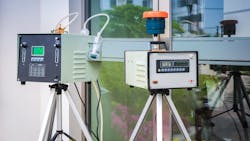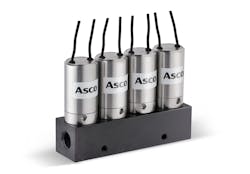Gas Analyzer Designers Face New Growth, New Challenges
Industrial emissions, automobile exhaust and household waste produce a wide range of pollutants. These include chemical gases such as NOx as well as fluorocarbons. Together with CO2 and methane, they contribute to acid rain, sick house syndrome, depletion of the Earth’s ozone layer and, of course, climate change.
These environmental issues pose a severe threat to security, economics and the health of individuals, and they are leading to increasingly strict emissions legislation worldwide. The U.S. Environmental Protection Agency (EPA) has proposed rules that would establish ultra-low emission standards across industries as diverse as automotive and HVAC, and companies are required to either comply with them or face costly fines and unexpected shutdowns.
Monitoring and quantifying emissions to comply with applicable standards require gas analyzers and environmental test equipment to measure emissions accurately. Major considerations for reliable gas analysis and emission monitoring include the ability to measure multiple gases simultaneously (in a cost-friendly manner) and the need for higher detection sensitivity and accuracy.
As a result, the market for monitoring equipment, including gas analyzers, is expected to grow rapidly in the coming years. For instance, according to a study conducted by Research and Markets, the gas-analyzer market was valued at $558.6 million in 2021 and is expected to grow at a compound annual growth rate of 6.7% per year from 2022 to 2027.
Industry compliance will require not only meeting performance, reliability, durability and energy efficiency standards, but must do so in challenging applications.
Analyzer Design
Gas analyzers are usually modular in configuration and expandable to accommodate multicomponent gas measurement. These compact machines can be portable or designed for fixed tabletop use. Portable analyzers are most often used in to detect gas components in a particular environment over at a specific time. Continuous analyzers, as their name implies, are used at a site, such as a steam or electricity generation facility, to constantly monitor compliance with environmental regulations and/or to fine-tune processes for greater efficiency and increased profitability.
The typical analyzer enclosure consists of a variety of components including a sample pump, flow measurement gauge with alarm, valve block, pressure sensor, digital input/output cards, and internal or external power supply. The valve block, with individual solenoid valves to provide pressure control, flow path selection, calibration and flow purge, is a critical component. The wetted materials need to be compatible with the gas samples to ensure that no out-gassing occurs. The valves must be compact with a small profile and not generate much heat at high actuation frequency. And, most important, any potential leakage needs to be held to the barest minimum to avoid loss or contamination of gas samples that could negatively affect the analysis result.
Modern advanced valve solutions can increase flexibility and reliability of gas flow control, reducing fluid-path complexity and helping eliminate complex tubing connections and potential leakage. Designers should look for compact, lightweight architecture and low power consumption. Other features that make valves appropriate for applications in industrial gas analyzers include:
- Larger orifice sizes and vacuum capability enhanced versatility across multiple applications
- Inert material constructions for corrosion protection
- Availability in different porting configurations for manifold and in-line mounting
- Compliance with relevant CE directives and RoHS compliance for lead-free environments
One example is the ASCO Series S miniature general-service solenoid valves from Emerson. The valves are engineered to ensure efficient fluid control with low maintenance and increasing overall reliability of gas analysis systems, even in demanding application environments. Construction is stainless steel throughout, and sealing-material FKM with options include NBR, EPDM or FFKM elastomers.
Finding Help
Launching new designs ahead of the competition is essential to successfully capitalizing on the growing gas-analyzer market. However, due to the critical nature of fluid control in these systems, a lack of in-house fluid-control-design knowledge can make it hard to understand what is possible. This, in turn, can lead to delays that make it difficult to meet aggressive time-to-market goals.
Emerson offers engineering resources to help any design team define requirements, select the right valves, develop customized solutions and manifolds to produce the precise performance needed, and expedite delivery to keep a project on schedule.
For example, Emerson was able to help a leading manufacturer eliminate valve-related rejections and time-consuming cleaning processes by delivering a customized solenoid valve manufactured in Class-8-equivalent cleanroom. This solution helped significantly improve lead times for a new material-characterization instrument.
In any competitive market, particularly one in which accuracy and reliable performance are paramount, it is important to get the design details right. That is especially true when considering something like flow control valves, which play a pivotal role in gas analyzers. The choice of a supplier can make a big difference. At a time when personnel with the right skills are often in short supply and supply chains are stretched the limit, a valve OEM with a strong technical foundation and global resources can be an invaluable ally.
Silvia Shen is the Global Product marketing manager, Industrial Analyzers, Analytical & Medical for Emerson Automation Solutions. She has more than five years’ experience in the area of analytical instruments.
About the Author
Silvia Shen
Global Product Marketing Manager, Industrial Analyzers, Analytical & Medical, Emerson Automation Solutions
Silvia Shen is the Global Product marketing manager, Industrial Analyzers, Analytical & Medical for Emerson Automation Solutions. She has more than five years’ experience in the area of analytical instruments.


